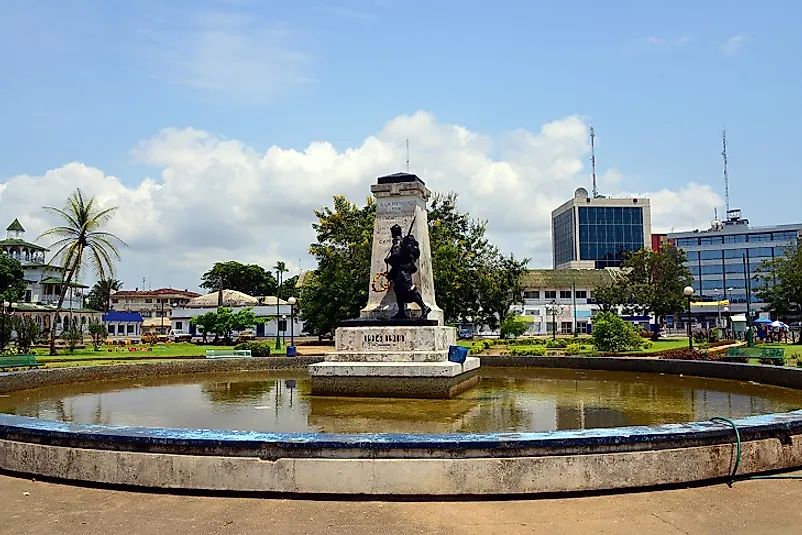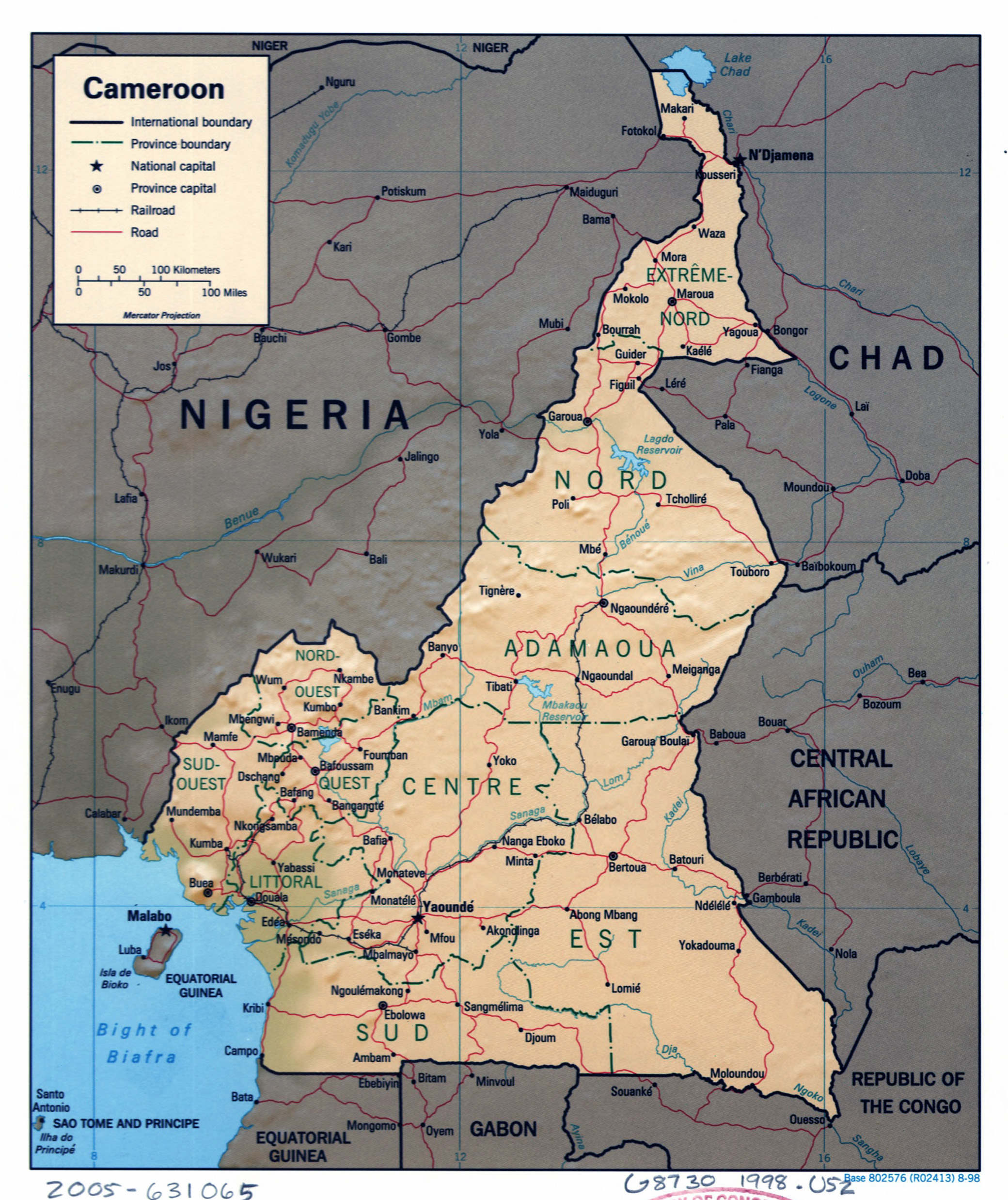Cameroon is located in Central Africa and has a population of over 25 million people. Some of the key cities in Cameroon that serve as economic and cultural hubs are:
Douala: Economic Powerhouse and Major Commercial Hub
Douala is located in the Littoral Region of Cameroon and is the country’s largest city with over 3 million inhabitants. As the primary deep-water sea port of Cameroon, Douala is a major center for international trade and commerce. Several large corporations have their headquarters in Douala, particularly those operating in the transportation, manufacturing and petroleum industries. While Douala suffers from pollution and poverty in some neighborhoods, it remains the primary economic engine of Cameroon.
Thriving Port Drives Trade and Business
Douala’s strategic location on the Wouri River estuary has made it the preferred port for shipping goods in and out of Cameroon. Major exports such as cocoa, coffee and petroleum products pass through the port’s modern terminals. This port activity has attracted many businesses that rely on import-export, which in turn has boosted Douala’s economy. However, the high volume of trade has also led to traffic congestion and pollution in some parts of the city.

Urban Renewal Efforts Aim to Improve Living Standards
In recent years, the government has invested heavily in Douala’s infrastructure to support its growing population and economy. New roads, bridges and housing developments aim to ease transportation woes and provide better living conditions. However, much of Douala still grapples with lack of sanitation and poverty. Non-profit groups and civic leaders are working to boost access to healthcare, education and sanitation in underdeveloped communities through various community development programs.
Yaoundé: Political Center and Cultural Hub
Yaoundé serves as the political capital of Cameroon, with a population of over 2.5 million residents. As the seat of national government, Yaoundé is home to important institutions like the presidency, parliament, supreme court and various ministries.
Vibrant Student Community Drives Cultural Scene
Beyond its role as the center of politics, Yaoundé is also a hub for education and culture. It hosts several public and private universities with a combined student population of over 100,000. This large student community has made Yaoundé vibrant cultural melting pot. The city has various art galleries, live music venues, museums and public parks that add to its lively cultural scene.
Transportation Challenges Despite Infrastructure Drive
Yaoundé has seen major road and rail infrastructure projects in recent years due to its importance. However, the rapid pace of urbanization has exacerbated transportation challenges. Heavy traffic jams are common during rush hours. And despite improvements, the city’s public transportation network still struggles to meet rising demand.
Western Highlands: Agricultural and Educational Centers
The western highlands region of Cameroon, with its fertile volcanic soil and moderate climate, supports significant agricultural production. Some of the major cities in this region serving as educational and commercial hubs are:
Bafoussam: Hub for Farming and Livestock
Bafoussam has a population of over 300,000 located at an elevation of 1,200 meters above sea level. It serves as a major commercial center for the country’s significant farming and livestock industries. Cash crops like coffee, tea and spices are traded through Bafoussam’s markets. The city is also a transportation hub with road links to other western cities like Foumban, Dschang and Bandjoun.
Foumban: Center for Traditional Arts and Culture
With a population of around 100,000, Foumban is renowned for its rich cultural heritage as the former capital of the Bamoun Sultanate. Traditional artistic pursuits like weaving, pottery, bronze casting are well-preserved here. Foumban’s elegant Fon palace reflects the Bamoun people’s storied past. The city has grown as an important agricultural center while maintaining its cultural prestige.
Buea: Gateway to Mount Cameroon
Situated near the imposing Mount Cameroon, Buea has risen as a center for education and eco-tourism with a population reaching 150,000. The University of Buea is a major institution attracting students from across Cameroon and beyond. With its temperate climate and scenic natural surroundings, Buea has also emerged as the most popular base for climbing Africa’s largest Francophone volcanic mountain.
Coastal Cities: Tourism and Industry Hubs
Cameroon’s coastline on the Bight of Biafra supports key ports and seaside cities with strategic industries and attractions driving their growth.
Limbe: Beach Resorts and Wildlife Conservation
The coastal city of Limbe, formerly known as Victoria, has a population of over 150,000. Its scenic beaches and rainforests attract tourists to facilities like the Limbe Wildlife Center and Botanical Gardens. Once mainly a cocoa export hub, Limbe is now growing its tourism sector centered around eco-lodges, resorts and water sport operations. Nearby is Lake Nyos, where scientific studies are conducted on its rare geological formation.
Kribi: Deepwater Port and Industrial Center
Kribi is a rapidly expanding city of over 100,000 residents strategically located along Cameroon’s oil- and gas-rich southern coastline. It serves as the country’s second largest port, with deep draft allowing large ships. Kribi is also a hub for energy sector operations and related heavy industries. Growth is supported by the recent opening of a natural gas liquefaction plant and aluminum smelter attracting major investments.
Northwest Region: Education and Cross-Border Trade
Cameroon’s Northwest Region has two sizable cities playing critical economic and social roles for the region:
Bamenda: Education and Commerce Hub
Bamenda has over 350,000 residents and has developed into a major center of commerce and education in the northwest. It hosts the University of Bamenda which has boosted the city’s standing. Bamenda’s market is important for local agriculture and handicrafts. As a cosmopolitan city, it also benefits from its proximity to Nigeria facilitating cross-border business activities.
Garoua: Gateway to Mandara Mountains
Garoua is located in northern Cameroon near the borders with Chad and Nigeria, with a population exceeding 250,000. Its strategic position has made Garoua a significant trading hub for cross-border commerce in foodstuffs, textiles and minerals. The surrounding Mandara Mountains are a scenic attraction boosting tourism. Nearby special economic zones also support agricultural processing and light manufacturing industries.
In closing, Cameroon’s diverse cities reflect the cultural variety and economic dynamism across its regions. While facing infrastructure and socioeconomic challenges, these cities demonstrate Cameroon’s potential through trade, education, tourism and resource-driven development serving both domestic and foreign markets. Ongoing urban renewal efforts also aim to enhance standards of living.

 The Rich Cultural Offerings of Los Angeles
The Rich Cultural Offerings of Los Angeles